You sit down for dinner, fork in hand, ready to enjoy your meal—until you feel it. The stare. Those big, soulful eyes locked onto you, silently pleading for just one bite. Some dogs take begging to an art form, using their charm (and sometimes a little drool) to guilt you into sharing.
But have you ever wondered why some breeds are worse beggars than others? It’s not just about hunger—instincts, breed history, and food-driven personalities all play a role.
From the ever-hungry Labrador Retriever to the persistent Dachshund, some dogs will stop at nothing to get a piece of your meal. Can you guess which breeds top the list? Let’s dive in and find out!
Dog Breeds That Are Most Likely To Beg For Food At The Table
1. Rottweiler
Quick Facts:
- Known for: Strength, loyalty, protective instincts
- Ideal for: Experienced owners, active households
- Temperament: Confident, affectionate, food-motivated
Rottweilers trace their origins back to ancient Rome, where they were bred as cattle-driving dogs. Their history of working alongside butchers made them naturally food-driven, as they often received scraps as rewards. Over time, their strong food motivation has remained, making them one of the most popular dog breeds for training.
These dogs are natural guardians, but their deep attachment to their families makes them prone to begging. They quickly learn that a well-timed whine or a persistent stare can score them a treat. If ignored, expect puppy dog eyes whining at full force.
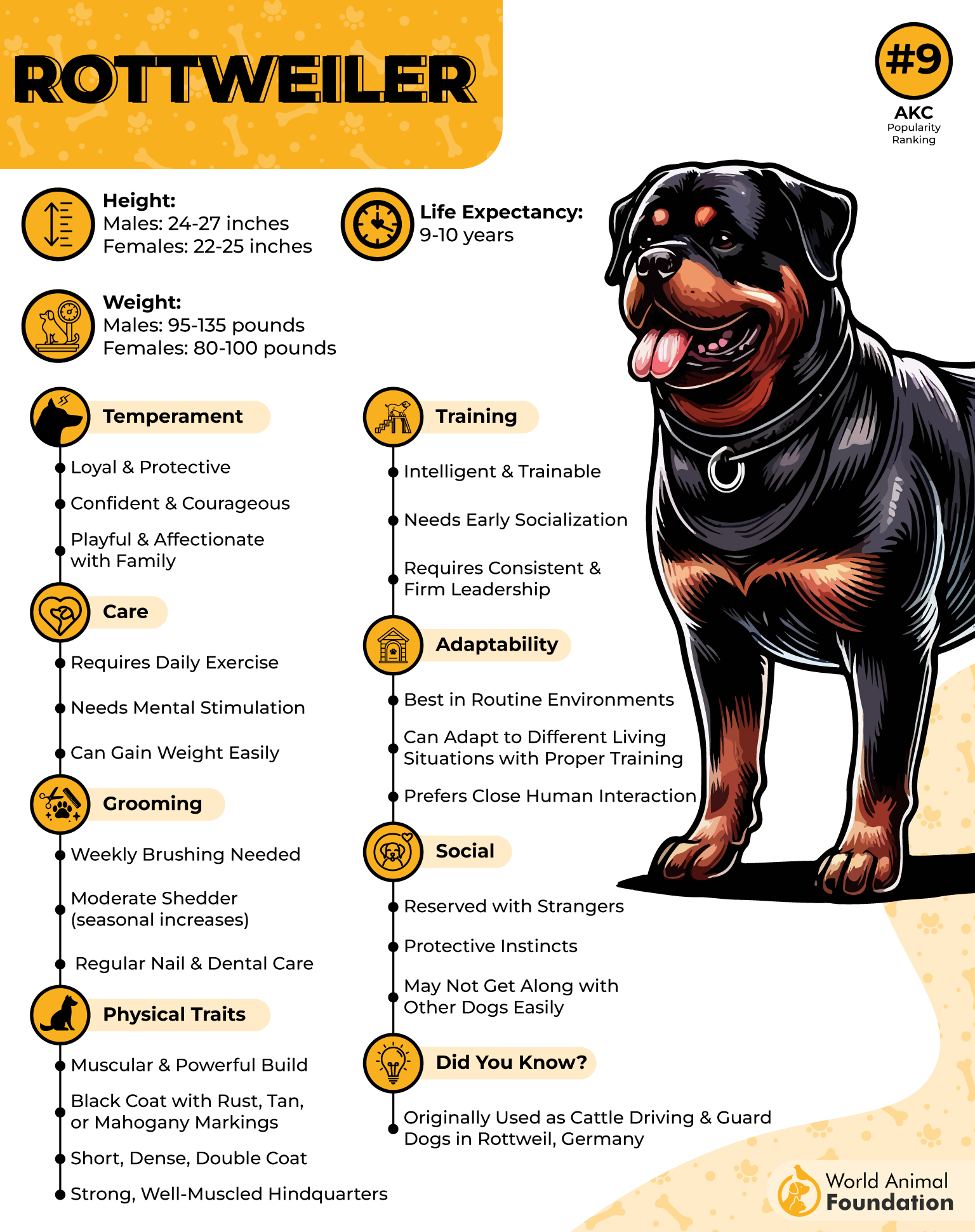
Highly intelligent, Rottweilers quickly pick up on human behavior, as per PetMD. They can remember what works and will repeat actions that lead to food rewards. Their strategic begging skills make them experts at reading emotions.
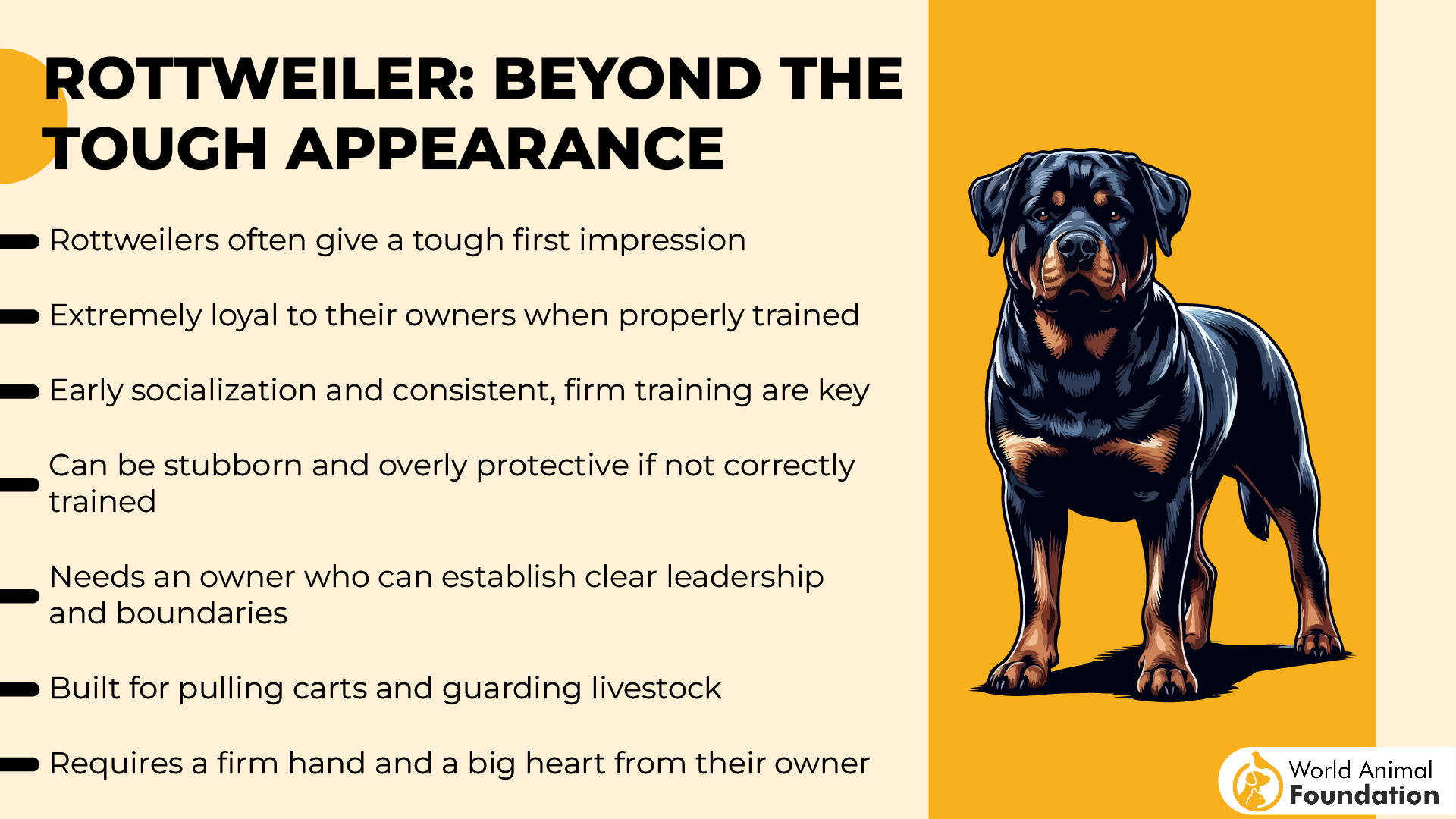
Their large, expressive eyes give them an advantage when begging. With a slight head tilt and unwavering stare, they master the art of puppy dog eyes—a tactic hard to resist, even for the strictest owners.
While protective by nature, Rottweilers are incredibly affectionate with their families. Their persistent yet loving personality means they won’t give up until they get a bite. If ignored, they may resort to a gentle nudge or a dramatic sigh, making them impossible to ignore.
2. Norwegian Elkhound

Quick Facts:
- Known for: Hunting skills, loyalty, independence
- Ideal for: Active owners, adventurous families
- Temperament: Alert, affectionate, food-motivated
The Norwegian Elkhound is an ancient breed originally used by Vikings for hunting large game. With a history of working alongside humans, these dogs developed a strong food drive, often rewarded with food scraps after a successful hunt. This deep-rooted association with food makes them persistent beggars.
Their hunting instincts make them naturally opportunistic. Accustomed to searching for hidden treats, they have an uncanny ability to sniff out food—even from across the room. If there’s a delicious meal nearby, expect them to sit by your side, waiting for a bite.
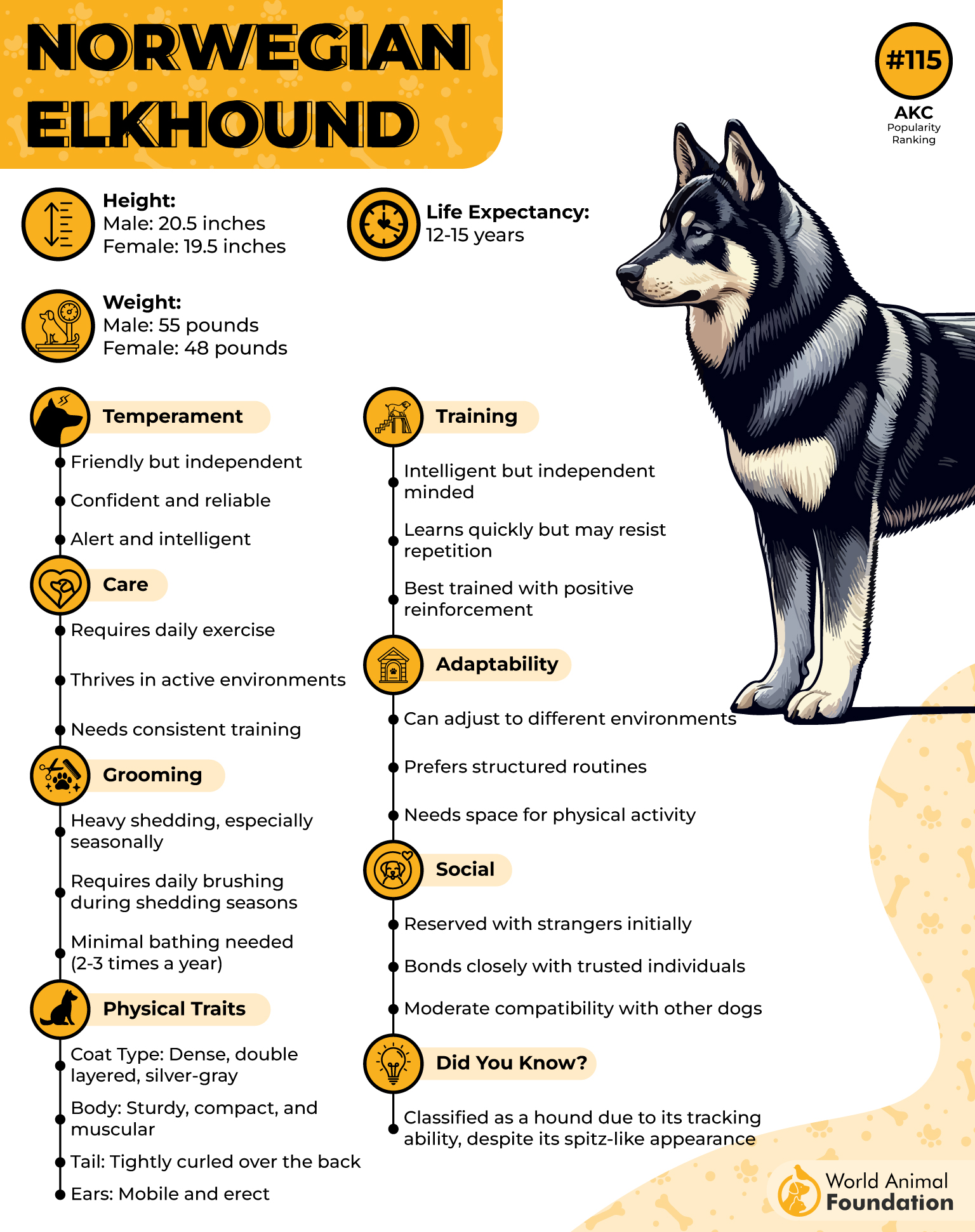
Highly intelligent, Norwegian Elkhounds are quick learners, as mentioned in the American Kennel Club (AKC). They observe patterns, remembering which behaviors lead to food rewards. A little whining or a well-timed nudge is all it takes to convince their owners to share a snack.
Their deep-set, expressive eyes play a huge role in their begging tactics. Combined with their fluffy, wolf-like appearance, their pleading gaze makes them even harder to resist. One look, and their owners often cave in, giving them exactly what they want.
This furry friend is both affectionate and persistent. Their stubborn yet loving nature means they won’t give up easily. If ignored, they’ll resort to vocal protests or dramatic sighs until they get what they want. No matter how strong-willed their owner is, a Norwegian Elkhound always finds a way to win.
3. Dachshund
Quick Facts:
- Known for: Playful personality, strong hunting instincts
- Ideal for: Apartment dwellers, families, single owners
- Temperament: Bold, affectionate, food-obsessed
Originally bred in Germany to hunt badgers, the Dachshund has always relied on its keen sense of smell and persistence to track prey. This hunting background makes it one of the dog breeds most likely to have a food obsession. Historically, they worked for their meals, reinforcing their instinct to seek out food whenever possible.
As natural hunters, Dachshunds are pretty keen on scavenging. Their small stature doesn’t stop them from sniffing out snacks, whether it’s table scraps or a forgotten treat under the couch. This strong food drive makes them one of the low-slung dogs that will patiently wait by the dining table, hoping for a bite.
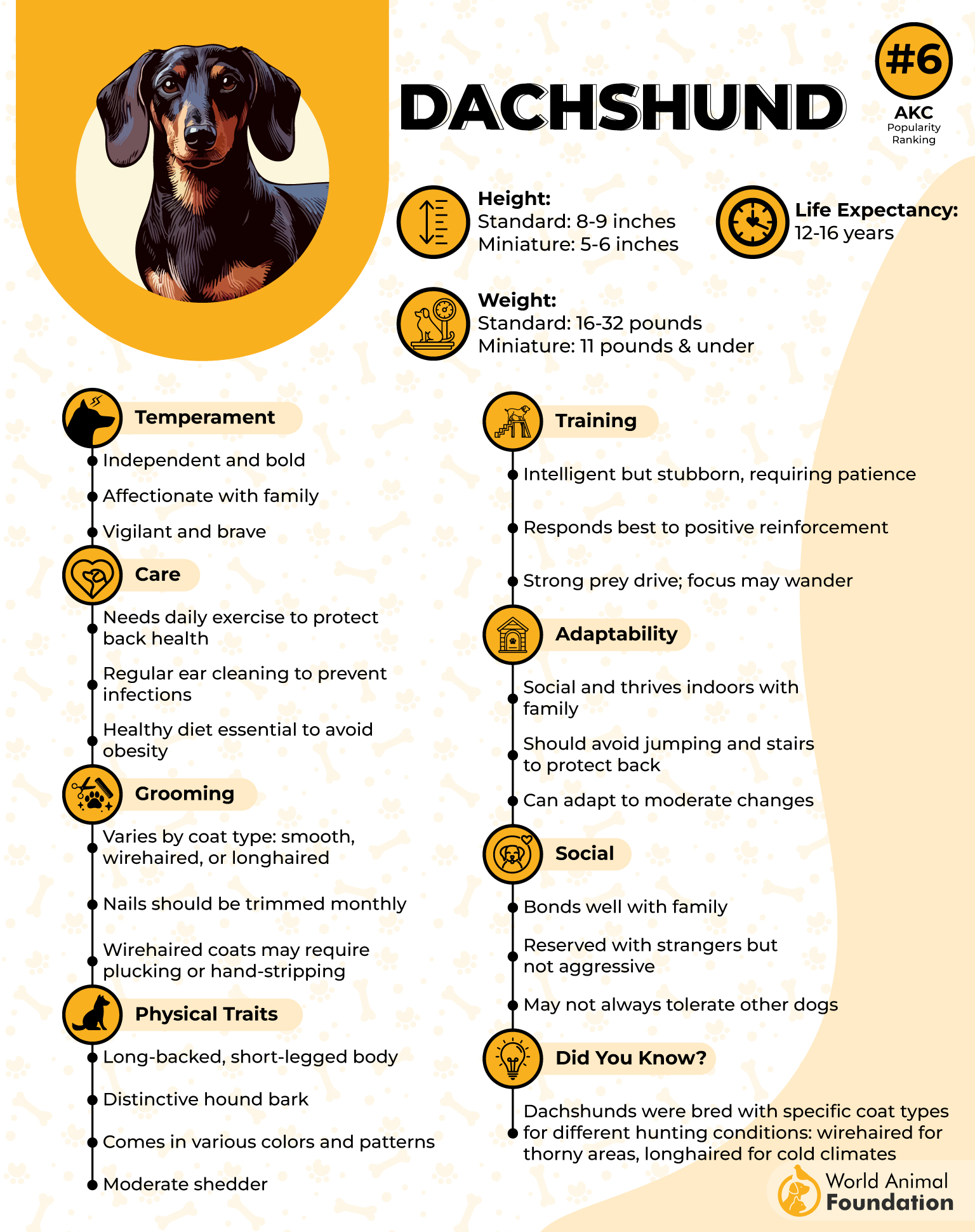
Their intelligence plays a huge role in their ability to beg effectively. Dachshunds quickly learn routines and understand which behaviors—like whining or sitting attentively—will result in food rewards. If they sense even the slightest hesitation from their owner, they’ll push their luck further.
Their big, round eyes and expressive eyebrows make them masters of the “guilty” look. Combined with their small size and adorable face, it’s easy to see why they are one of the dog breeds most likely to beg. Their tactics make even the most disciplined owner give in.
Stubborn yet affectionate, Dachshunds are likely to beg until they get what they want. Ignoring them doesn’t work—they’ll try again with more persistence. Maintaining a healthy weight for this breed can be a challenge, as they won’t hesitate to manipulate their owners with endless charm and determination.
4. Beagle
Quick Facts:
- Known for: Exceptional sense of smell, playful nature
- Ideal for Active families, scent-tracking activities
- Temperament: Curious, food-motivated, friendly
Beagles were originally bred in England to track small game, making them one of the most food-driven breeds. Their insatiable appetite isn’t just about hunger—it’s wired into their instincts. Historically, they followed scents to locate prey, which meant finding food was their ultimate reward.
With over 220 million scent receptors, Beagles can detect anything remotely edible from a mile away, as per the NY Times. This makes them prone to begging, as they pick up even the faintest aroma of food. Unlike other breeds, their persistence isn’t just habit—it’s in their DNA to track down and claim a meal whenever possible.
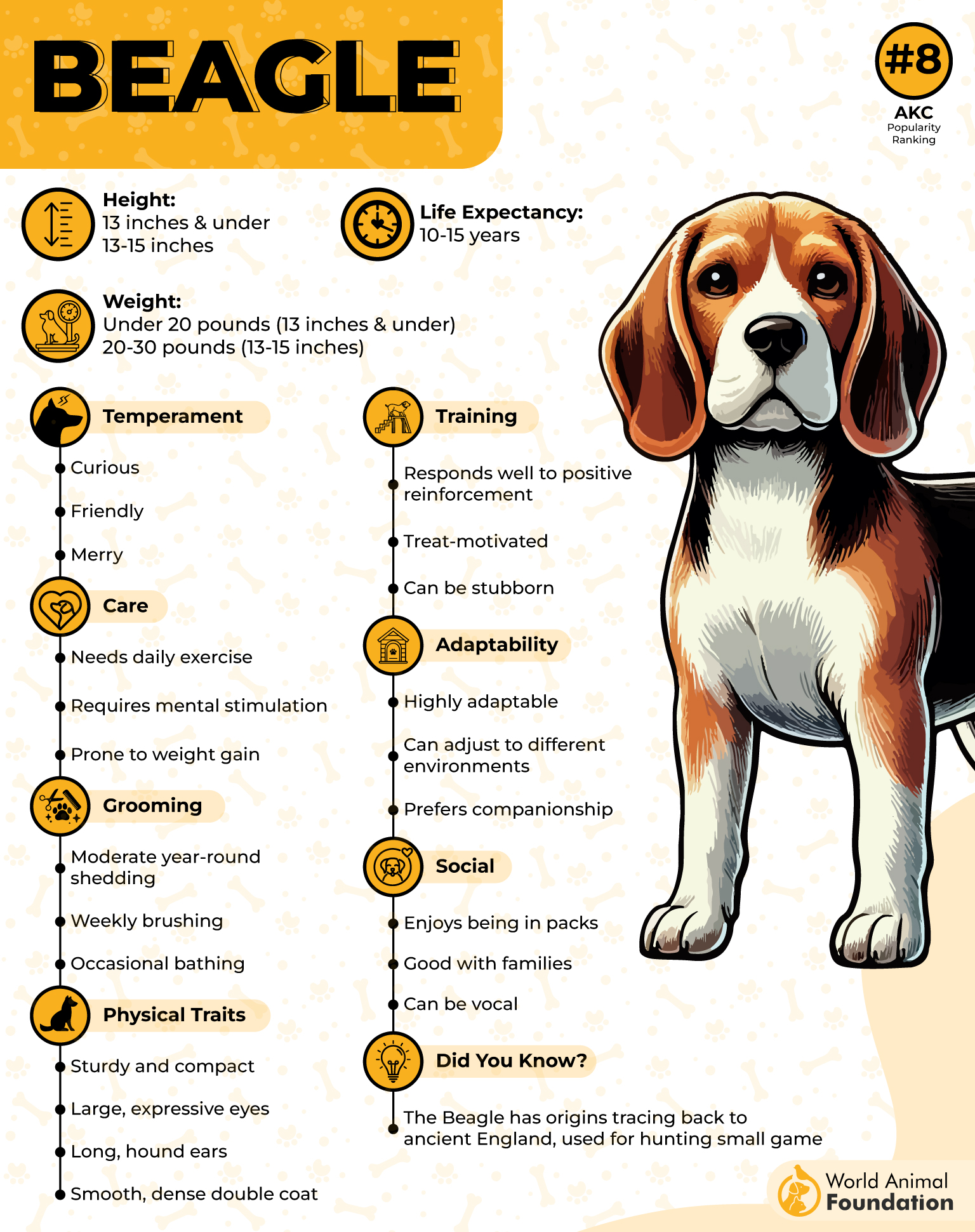
Their intelligence plays a key role in their sneaky food-related behaviors. Beagles quickly figure out how to manipulate their owners with whining, pawing, or intense stares. If a trick works once, they’ll repeat it endlessly, making them experts at begging for extra treats.
Their big, round eyes and floppy ears create an irresistibly sad expression. This, combined with their compact size, makes it hard for owners to say no. Their ability to appear both innocent and desperate is why Beagles often succeed in getting extra food from unsuspecting humans.
Stubborn yet lovable, Beagles will beg until they get their way. To prevent accidental ingestion of unsafe foods, a secure environment is crucial. With regular exercise and portion control, Beagles can maintain a healthy balance between their love for food and their well-being.
5. Bull Terrier

Quick Facts:
- Known for: Unique egg-shaped head, playful personality
- Ideal for: Active owners, families with older kids
- Temperament: Energetic, affectionate, stubborn
Bull Terriers were originally bred for bull-baiting and later became loyal companions. While they weren’t specifically bred for food motivation, they’ve adapted to associate eating with positive reinforcement. Their strong bond with humans makes them eager to share mealtimes, turning them into natural beggars.
Their playful and mischievous nature makes them one of the most persistent beggars in the dog world. Bull Terriers love interaction, and if begging means extra attention (or a snack), they won’t hesitate. Their adorable looks and charming antics make it hard for owners to resist giving in.
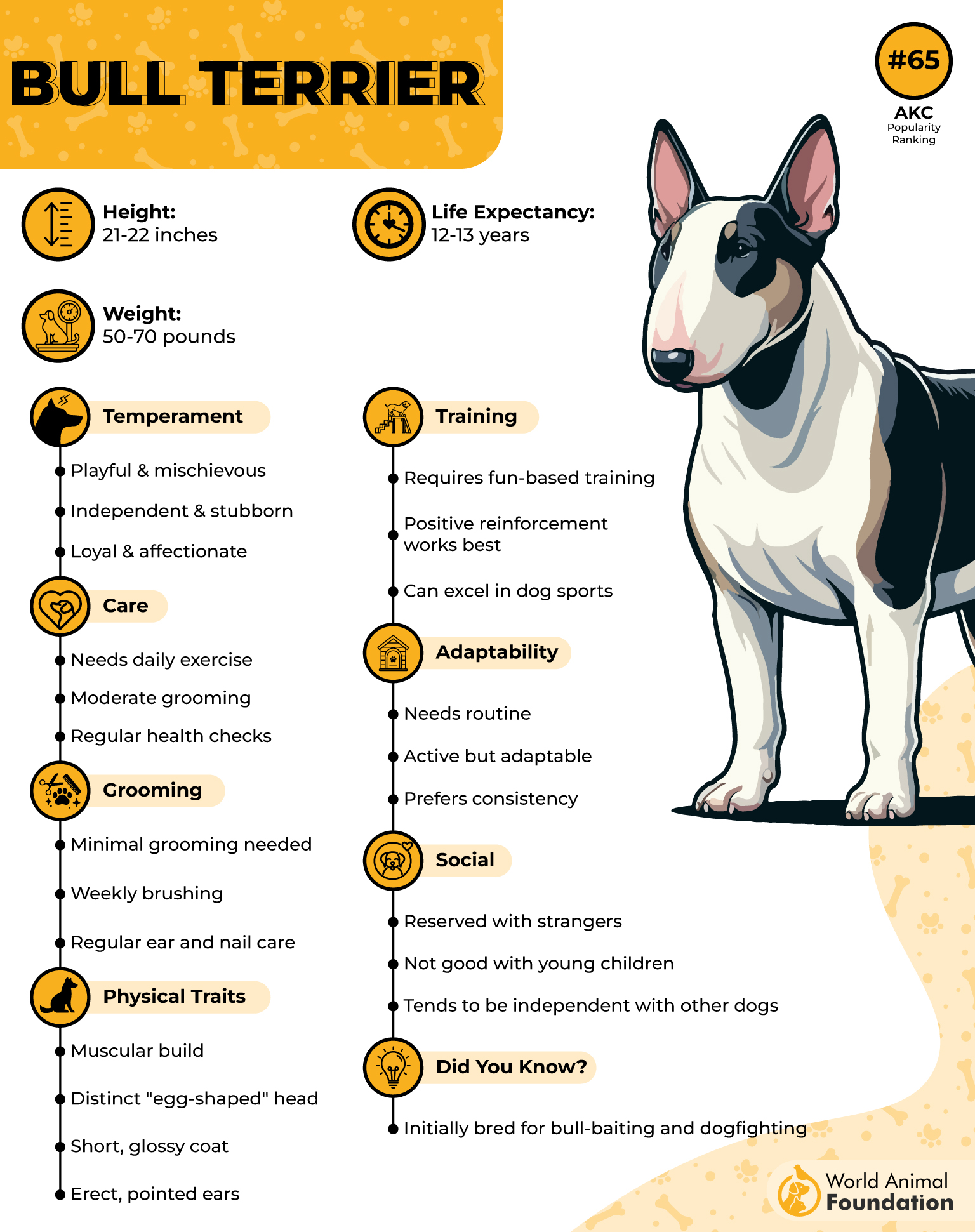
Highly intelligent Bull Terriers quickly learn patterns and adapt their behaviors. If whining, nudging, or dramatic sighs work once, they’ll repeat them. Their ability to read human reactions makes them pros at begging strategically until they get what they want.
Their strong, muscular build and expressive eyes add to their persuasive skills. The way they tilt their head and stare intensely makes it seem like they haven’t been fed in days. With their boundless energy, they’ll even perform tricks to win over their owners for extra treats.
Affectionate yet stubborn, Bull Terriers won’t take “no” for an answer. Without clear boundaries, they’ll keep testing limits. To keep their eating habits in check, owners need to be firm while still showing them love—because once a Bull Terrier sets its sights on a snack, there’s no stopping them.
6. Labrador Retriever
Quick Facts:
- Known for: Friendly nature, boundless energy
- Ideal for: Active families, service work
- Temperament: Loyal, food-motivated, outgoing
Labrador Retrievers were originally bred as fishing dogs in Newfoundland, trained to dig through icy waters to retrieve nets. Over time, their love for food made them one of the most food-driven breeds. Even as pups, they quickly learn that begging can lead to extra snacks.
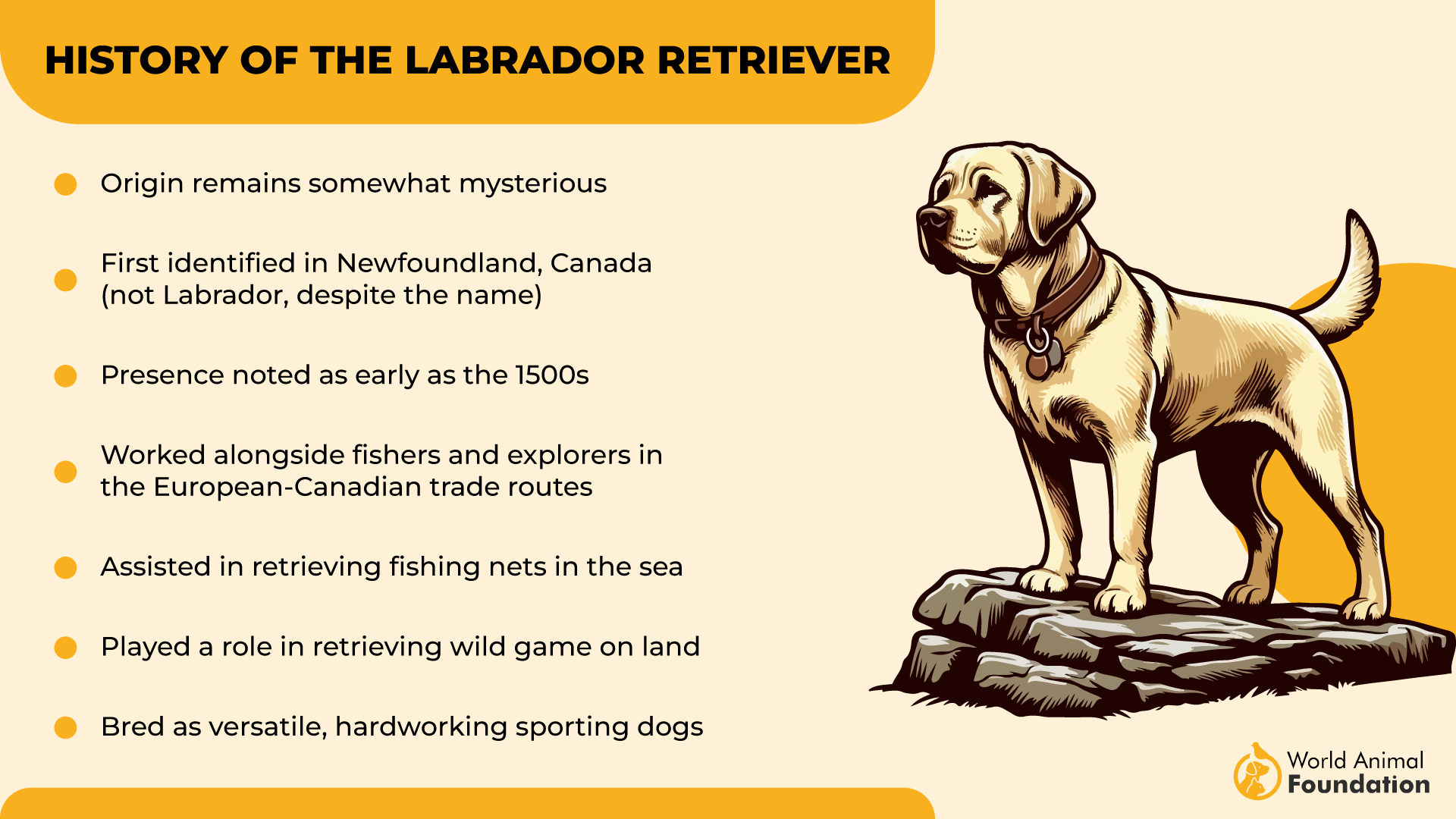
Labs have a strong instinct to scavenge, making them naturally prone to begging. Their history as working retrievers means they’re always on the lookout for food, and if there’s a chance to sneak a bite, they won’t miss it. This instinct, paired with their high energy levels, keeps them constantly thinking about their next meal.
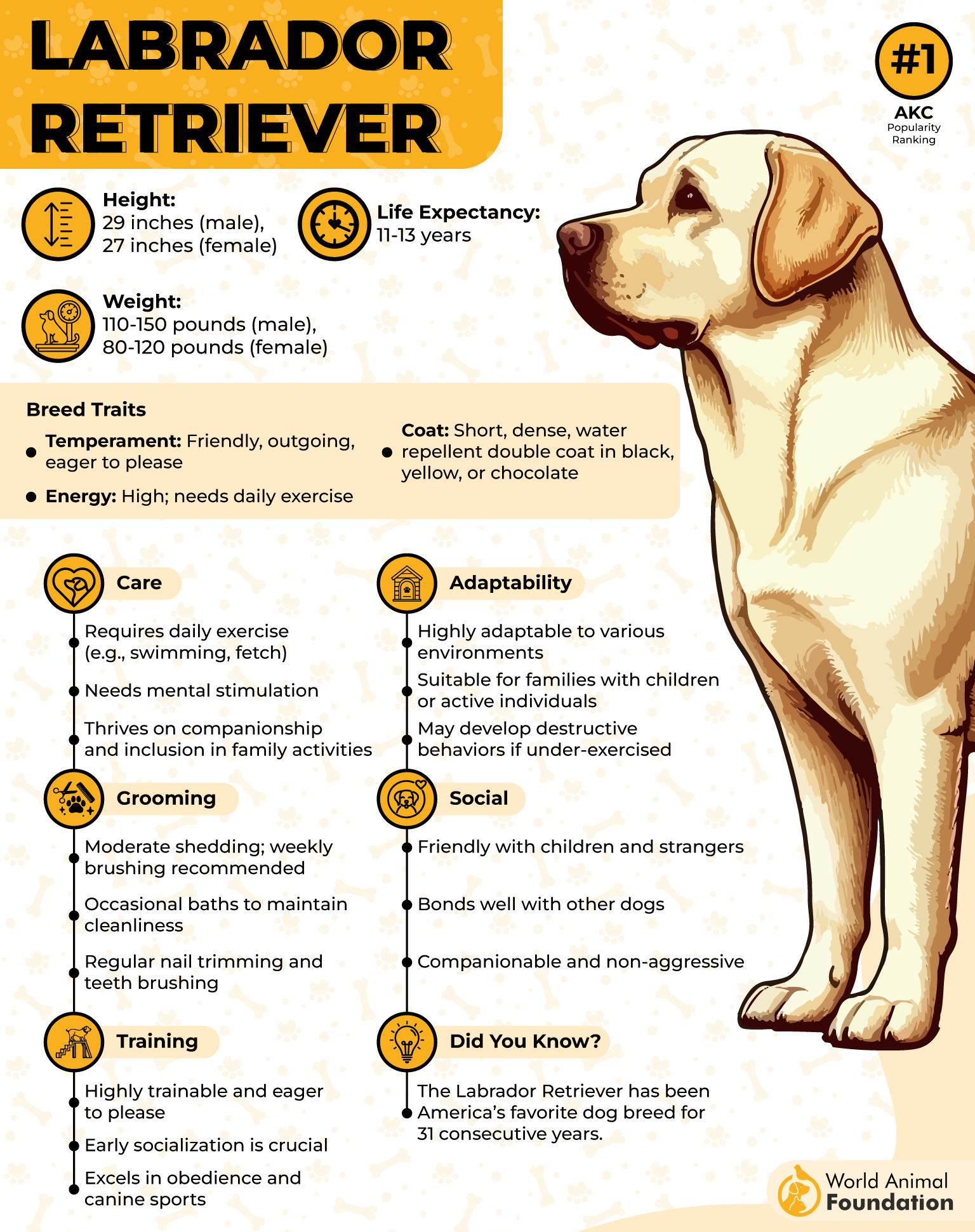
Incredibly smart, Labs learn patterns fast—if begging works once, they’ll put their skills to use over and over. They can quickly manage their tactics, switching from whining to pawing or even nudging their owners when they sense an opportunity for a treat.
Their big, soulful eyes and floppy ears make them one of the hardest breeds to resist. A single photo of a Lab’s sad face is enough to melt hearts, and they know exactly how to use their adorable expressions to their advantage when food is involved.
Labs are persistent, affectionate, and incredibly people-oriented. Without a well-managed diet and clear rules, they’ll beg relentlessly. Since they’re prone to weight gain, it’s essential for owners to set boundaries to keep them from overindulging. Otherwise, their love for food might lead them to dig into meals that aren’t meant for them!
7. Pug
Quick Facts:
- Known for: Playful personality, affectionate nature
- Ideal for: Apartment living, companionship
- Temperament: Stubborn, food-motivated, charming
Pugs have been man’s companion for centuries, originally bred as royal lapdogs in China. Their love for comfort and food made them highly favored among emperors. Unlike working breeds, they never had to hunt for meals, so they quickly learned that begging was the easiest way to get treats.
This breed has a natural tendency to overeat, making them one of the most food-obsessed small dogs. Their history as pampered pets means they’re used to getting what they want. Whether it’s dinner time or not, a Pug will stick by your side, hoping for a bite of whatever you’re having.
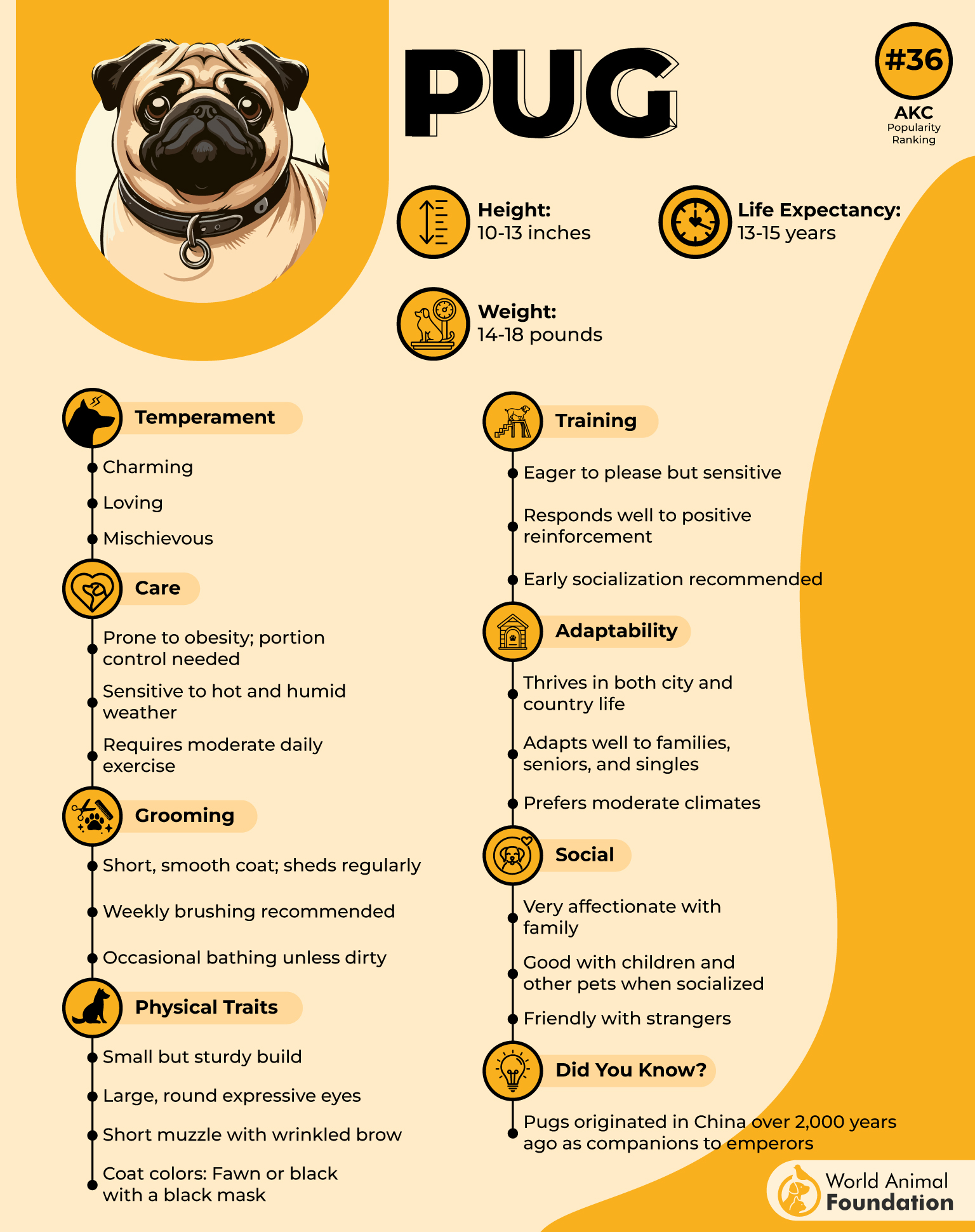
Highly intelligent and creative in their tactics, Pugs know how to use their charm to get what they want. They quickly recognize patterns and understand that a well-timed whimper or paw tap can fall in their favor when food is on the table.
Their big, round eyes and wrinkled faces make them one of the most beloved beggars in the dog world. They can make anyone feel guilty with just one look, using their expressive faces to convince even the toughest owners to share a snack.
Pugs are affectionate but also incredibly persistent when it comes to food. Once they set their sights on a treat, they stick to their mission until they succeed. Without clear boundaries, they’ll happily snack their way through the day, making portion control essential for keeping them healthy.
8. Golden Retriever
Quick Facts:
- Known for: Friendly nature, intelligence
- Ideal for: Active families, therapy work
- Temperament: Loyal, affectionate, eager to please
Golden Retrievers were originally bred in Scotland as hunting companions, trained to retrieve game without damaging it. This history made them highly food-motivated, as they were often rewarded with treats during training. Over time, their natural love for food has only grown, making them one of the dog breeds most likely to beg at the dinner table.
Their strong retrieving instinct plays a big role in their food obsession. They don’t just wait for treats—they actively dig through bags, counters, or even trash cans if given the chance. Their keen noses make it hard for them to ignore the scent of a delicious meal, and their persistence means they’ll wait patiently until they get a bite.
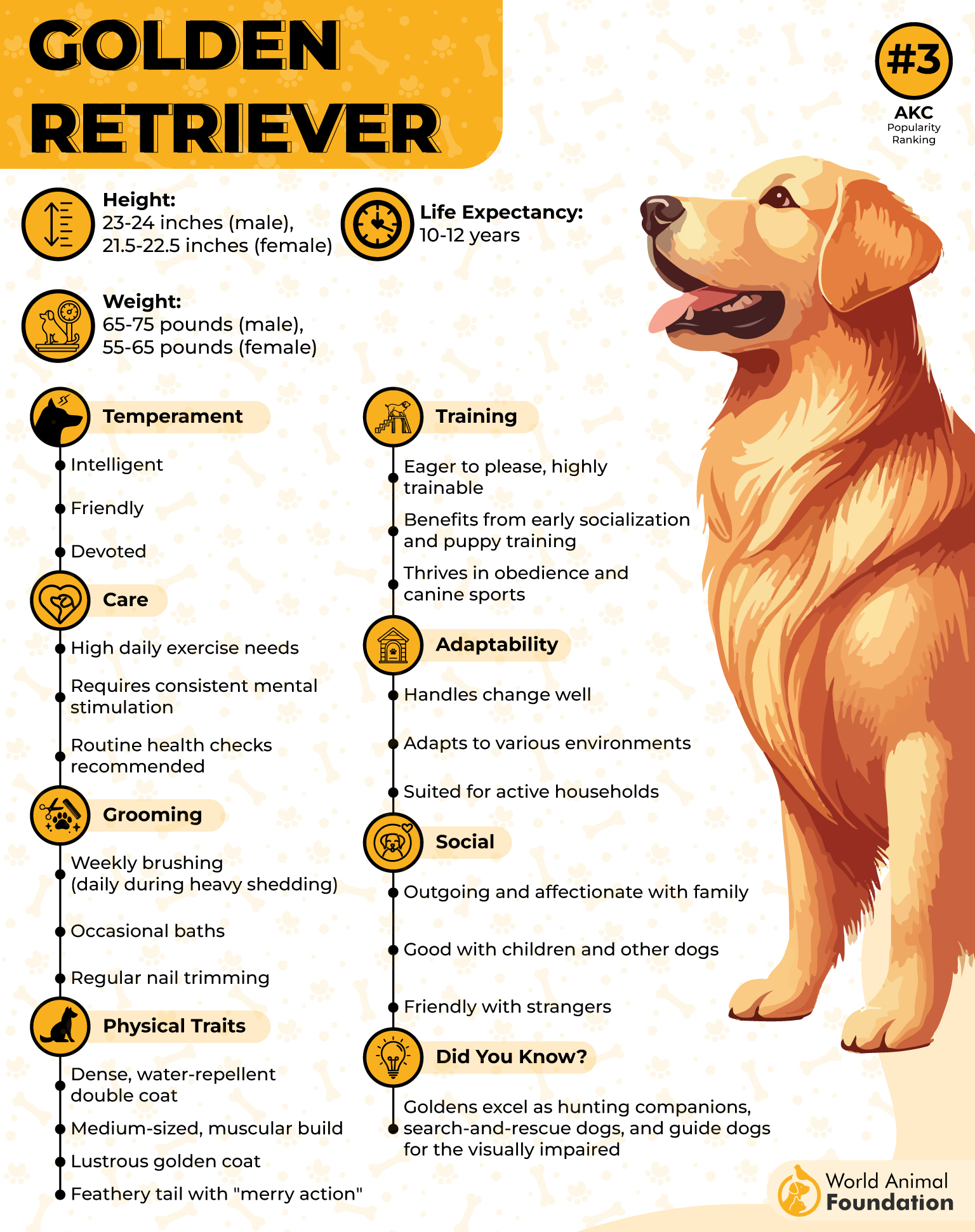
As one of the most intelligent breeds, Goldens quickly learn that begging works. Whether it’s a soft whimper or an adorable head tilt, they know how to manage their expressions to win over their owners. They even pick up on routines, appearing just in time when they sense food is being prepared.
Their big, soulful eyes and fluffy faces make them almost impossible to resist. They’re experts at photo-worthy begging poses, using their charm to guilt-trip their owners into sharing. Even the toughest dog parents find it hard to say no to that pleading Golden Retriever look.
Beyond their charm, Goldens have a persistent yet gentle nature. They won’t aggressively demand food, but they will subtly put themselves in the perfect spot, waiting patiently with hope in their eyes. If ignored, they might nudge or rest their head on your lap, reminding you they’re still there—just in case you change your mind.
9. Pembroke Welsh Corgi

Quick Facts:
- Known for: Herding skills, playful nature
- Ideal for: Active families, companionship
- Temperament: Intelligent, stubborn, affectionate
Pembroke Welsh Corgis were originally bred as herding dogs, making them highly alert and food-driven. Their ancestors needed quick energy, so they developed a natural love for snacks. Even today, their strong appetite makes them eager to beg whenever food is around.
Their herding instincts play a role in their begging habits, as they naturally follow movement—including food. They are quick learners and adapt easily, using their persistence to get what they want. Once they spot a meal, they don’t hesitate to position themselves strategically for the best chance at a bite.
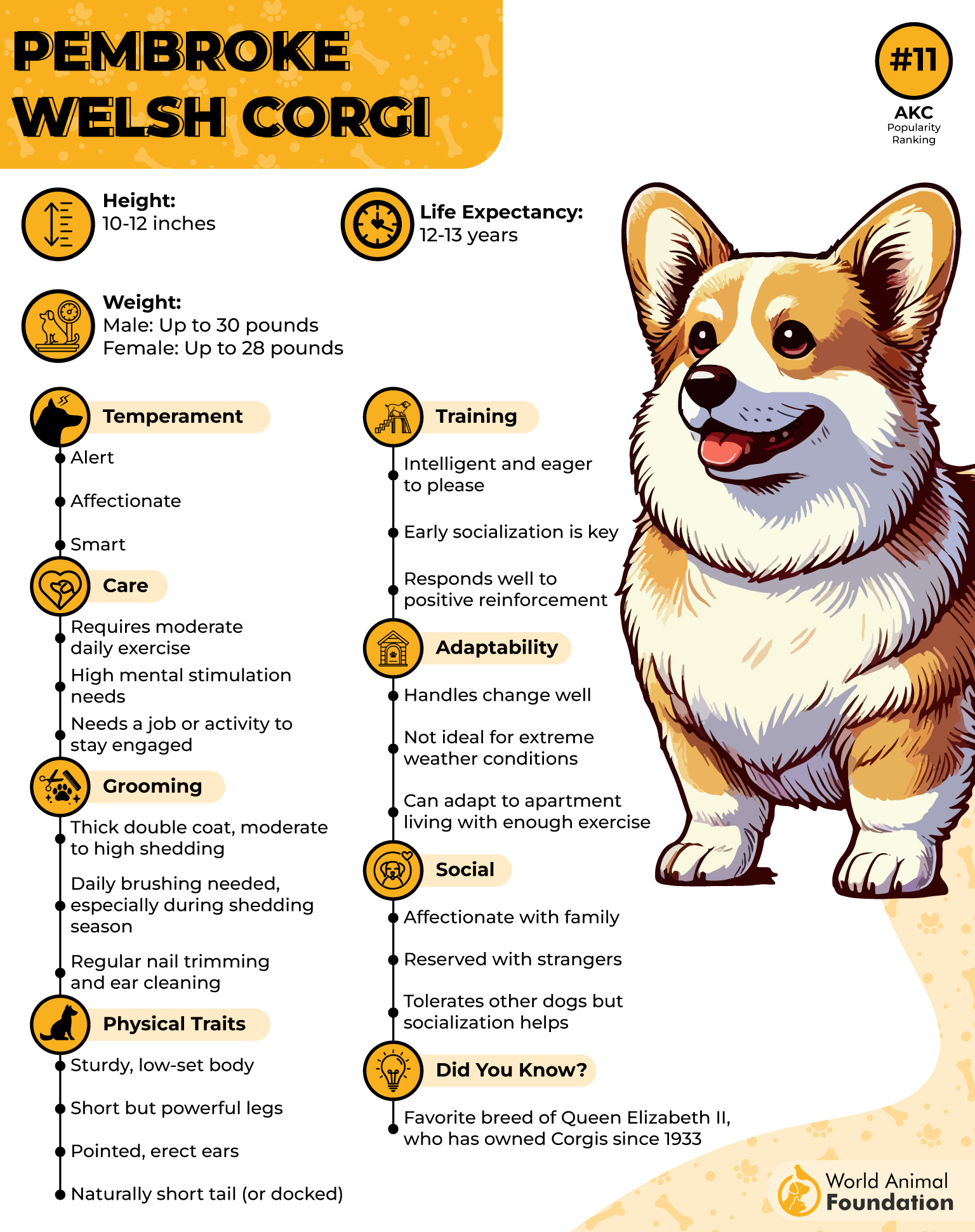
Highly intelligent, Corgis quickly pick up on human behavior and recognize patterns. If begging worked once, they’ll repeat the process with even more enthusiasm. They’re also known to test boundaries, seeing just how far their adorable antics can push their owners into sharing.
Their expressive eyes and perky ears make them hard to ignore. Even without making a sound, they can deliver a photo-worthy begging face that melts hearts. Their small stature also works in their favor—they’ll gently nudge legs or wiggle closer to ensure they’re noticed.
Personality-wise, Corgis are charming but persistent, and they don’t take “no” lightly. If ignored, they may resort to playful barks or gentle paw taps to remind you they’re still waiting. Their affectionate nature only adds to the challenge—how can you resist a furry friend who just wants a taste?
10. Great Pyrenees
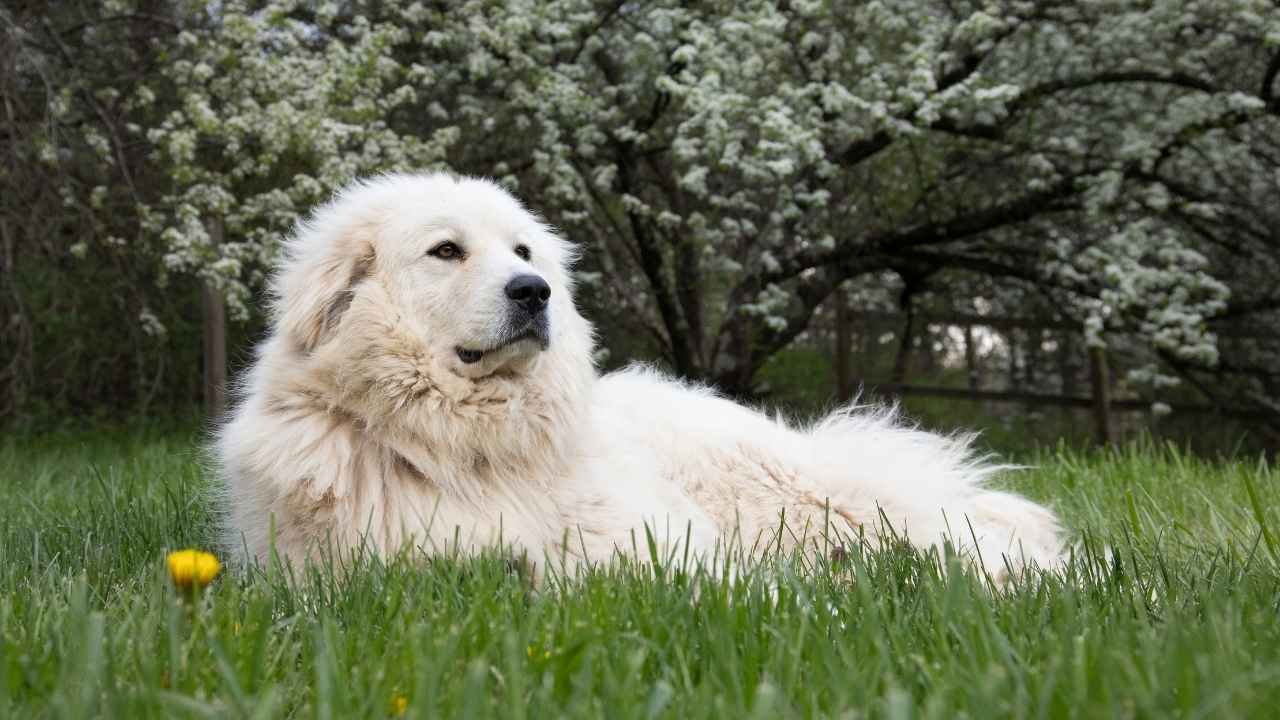
Quick Facts
- Known for: Guardian instincts, gentle nature
- Ideal for: Families, farm life
- Temperament: Loyal, independent, patient
Bred to guard livestock, the Great Pyrenees developed a strong sense of responsibility, which includes ensuring they never miss a delicious meal. Their history of working in the mountains means they learned to dig for food when needed, making them naturally resourceful eaters.
Their protective instincts extend to food, making them pretty keen on monitoring every bite you take. They have a calm but persistent way of waiting nearby, using their sheer presence to remind you that sharing is always an option.
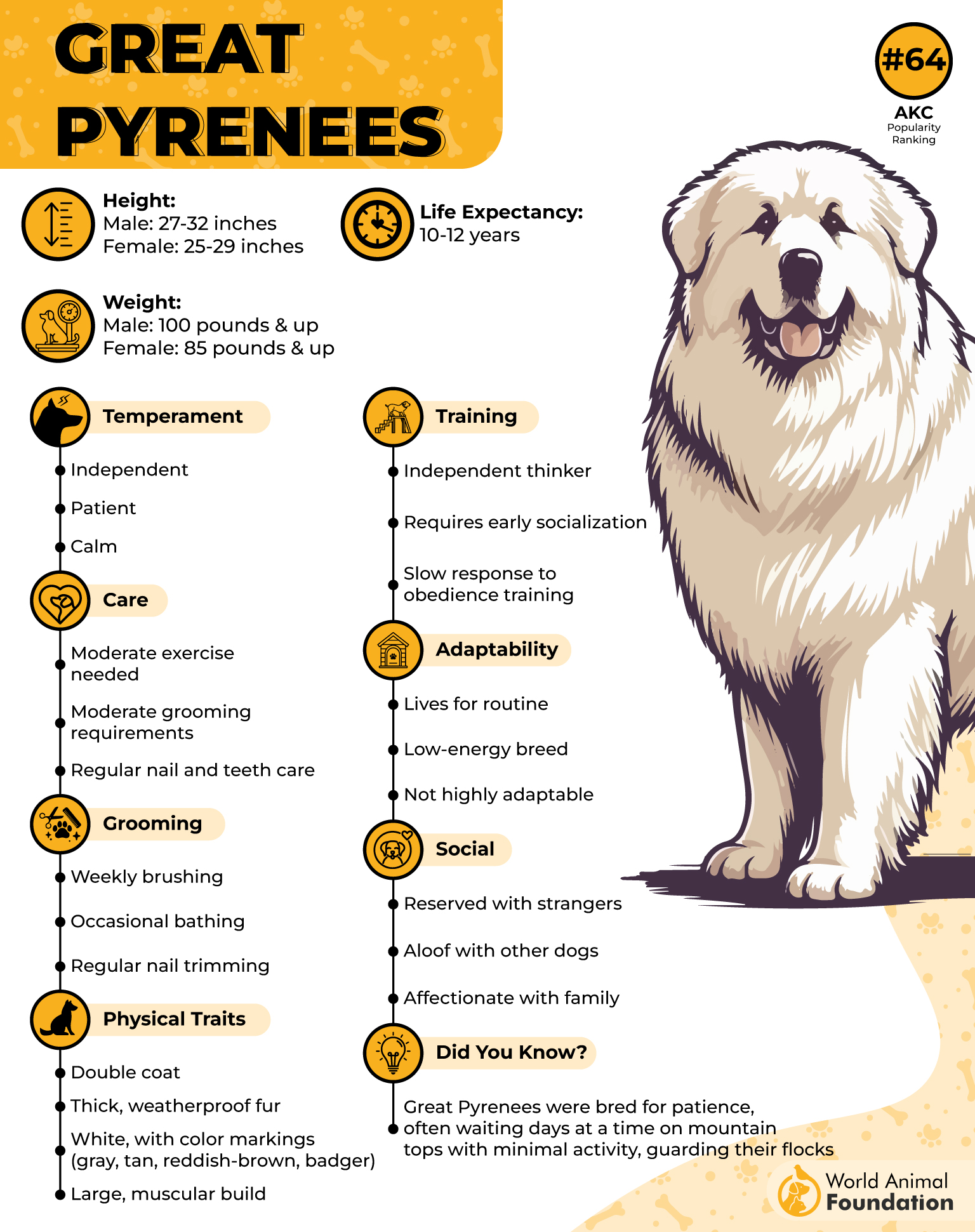
Despite their independent streak, they are highly intelligent and quickly learn what works when it comes to begging. A well-placed head on your lap or a longing stare is usually enough to convince you to hand over a treat.
With their fluffy coats and soulful eyes, they effortlessly use puppy dog eyes, whining to get attention. Their large size allows them to rest their head at table level, making their silent pleas hard to ignore.
While they are generally patient, they won’t hesitate to sit beside you for as long as it takes. Their affectionate nature makes them one of the most popular dog breeds, as they know exactly how to bond with their owners—especially over food.
Conclusion
While these breeds may be notorious for begging, it’s important to manage their diet properly to avoid obesity. If your dog is constantly sniffing around your house for scraps, consider structured feeding times and portion control. Training them to respond to commands like “stay” or “leave it” can also reduce excessive begging.
Regular exercise, mental stimulation, and proper nutrition will help maintain a healthy balance. By being mindful of their eating habits, you can keep your furry friend both happy and healthy without giving in to every adorable plea!


